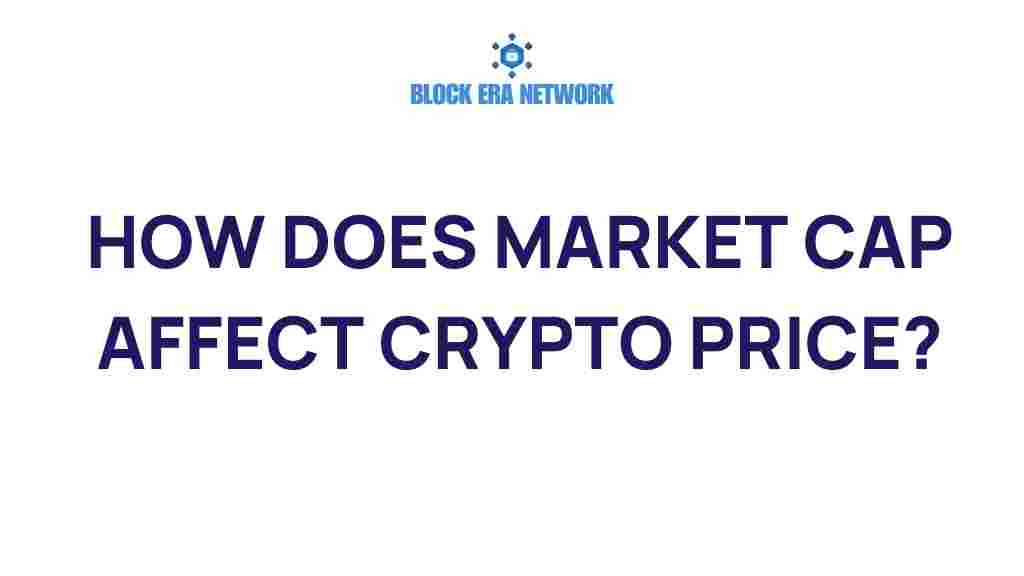In the dynamic world of cryptocurrencies, prices seem to fluctuate almost unpredictably. Behind the scenes, however, lies a crucial metric that holds significant sway over market movements—*market cap*. Understanding this concept is key to making informed investment decisions and navigating the volatile crypto landscape effectively.
What is Market Cap?
Market cap, short for *market capitalization*, is a fundamental financial metric used to measure the value of an asset. In the cryptocurrency world, market cap is calculated by multiplying the current price of a coin or token by its circulating supply:
Market Cap = Current Price × Circulating Supply
This simple formula provides a snapshot of a cryptocurrency’s size and significance in the market, making it an essential tool for investors evaluating their options.
Why is Market Cap Important in Cryptocurrency?
Market cap plays a pivotal role in determining a cryptocurrency’s standing and stability. Here are the key reasons why it matters:
- Determining Value: It helps compare cryptocurrencies beyond their price alone, offering a clearer picture of their market value.
- Risk Assessment: Cryptos with higher market caps are generally seen as more stable, while smaller caps may carry higher risks and rewards.
- Investment Decisions: Understanding market cap can guide investors in diversifying their portfolios strategically.
Types of Cryptocurrencies Based on Market Cap
Cryptocurrencies are often categorized based on their market capitalization:
- Large-cap Cryptocurrencies: These include well-established cryptos like Bitcoin and Ethereum, boasting market caps in the billions. They are considered safer investments.
- Mid-cap Cryptocurrencies: These offer moderate growth potential with relatively balanced risk-reward profiles.
- Small-cap Cryptocurrencies: Known for their high volatility, small-cap cryptos present the opportunity for significant gains but come with substantial risks.
How Market Cap Influences Crypto Prices
The relationship between market cap and crypto prices is intricate yet powerful. Here’s how it works:
- Price Stability: Cryptos with larger market caps often experience less dramatic price swings due to their substantial circulating supply and high demand.
- Investor Sentiment: A growing market cap can signal increased confidence in a cryptocurrency, attracting more investors and driving prices upward.
- Supply and Demand: When demand spikes for a limited-supply cryptocurrency, its market cap grows, pushing the price higher.
Market Cap vs. Price: Which is More Important?
It’s a common misconception that a high price equates to a valuable cryptocurrency. In reality, market cap is a more reliable indicator of a coin’s overall worth, as it accounts for both price and supply. For instance, a $1 coin with a supply of 1 billion tokens has a larger market cap than a $1,000 coin with a supply of 1,000 tokens, despite its lower price per unit.
Steps to Analyze a Cryptocurrency’s Market Cap
To make informed investment decisions, follow these steps to analyze market cap:
1. Research the Cryptocurrency
Begin by understanding the project’s fundamentals, including its use case, team, and roadmap. This helps gauge the potential for future growth.
2. Calculate the Market Cap
Use the formula Market Cap = Current Price × Circulating Supply. Many platforms like CoinMarketCap provide real-time data for convenience.
3. Compare with Peers
Analyze how the coin’s market cap stacks up against competitors in the same sector to identify market position and potential.
4. Assess Growth Potential
Consider whether the cryptocurrency’s market cap leaves room for growth. Large caps may be more stable, but small caps often have untapped potential.
Troubleshooting Common Misconceptions About Market Cap
Misunderstanding market cap can lead to poor investment decisions. Here’s how to avoid common pitfalls:
1. Market Cap Doesn’t Guarantee Stability
While a high market cap may indicate stability, external factors like regulation or market sentiment can still cause volatility.
2. Low Market Cap Isn’t Always Better
Although low market cap cryptos can offer high returns, they often carry risks like low liquidity and vulnerability to market manipulation.
3. Market Cap Changes Over Time
A growing or shrinking market cap can signal changing demand or supply conditions, making regular analysis essential.
Using Market Cap to Build a Balanced Crypto Portfolio
A balanced portfolio leverages the market cap metric to manage risk effectively. Consider the following strategy:
- Diversify Across Market Caps: Allocate investments among large, mid, and small-cap cryptocurrencies to balance stability and growth potential.
- Monitor Trends: Track changes in market cap to identify emerging opportunities and risks.
- Focus on Fundamentals: Don’t rely solely on market cap; incorporate other metrics like volume, adoption rates, and technology.
Conclusion
Market cap serves as a *hidden force* shaping the cryptocurrency market, offering invaluable insights into the size, stability, and growth potential of digital assets. By understanding and utilizing this metric, investors can navigate the crypto landscape with greater confidence, ensuring their strategies align with their financial goals.
For more insights into cryptocurrency metrics, visit our detailed guide on blockchain analysis. To explore live market cap data, check out resources like CoinGecko.
This article is in the category and created by Block Era Network Team
